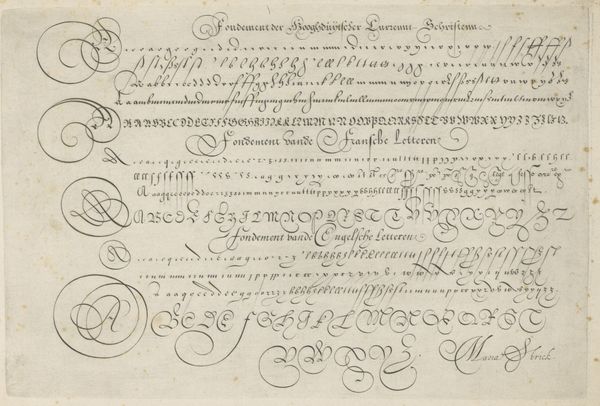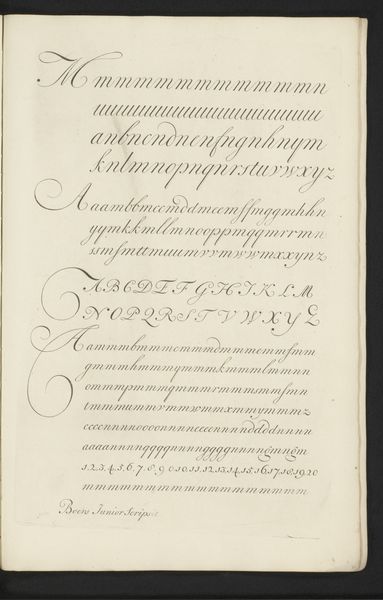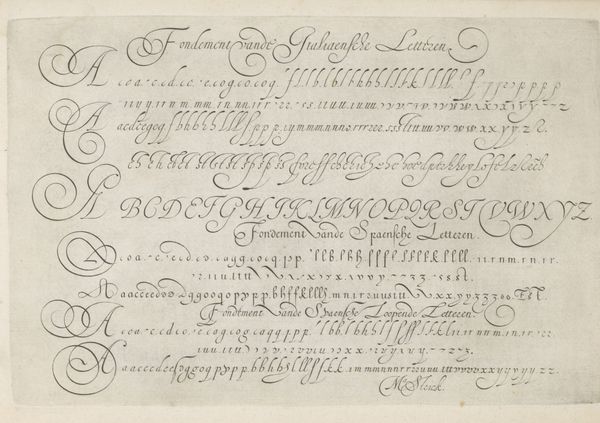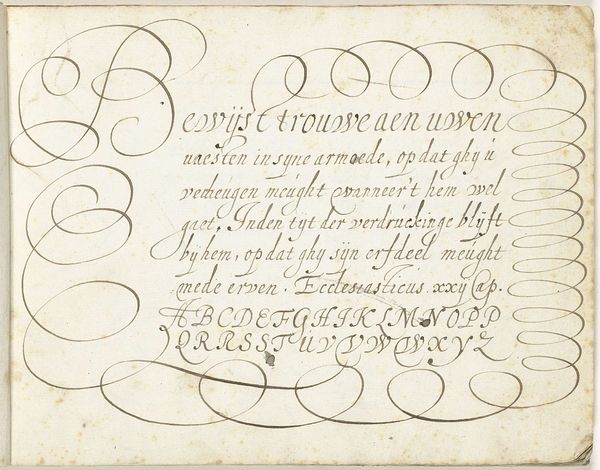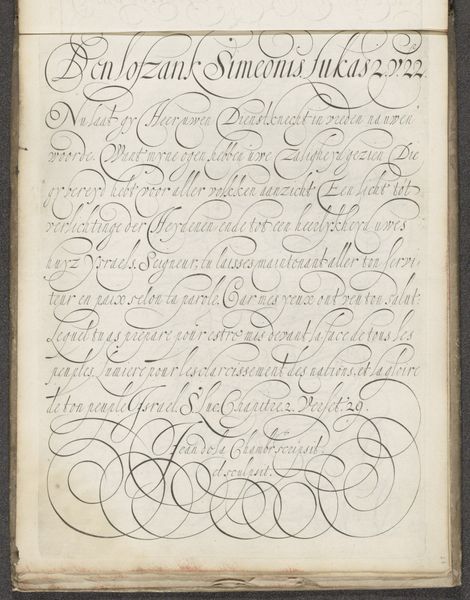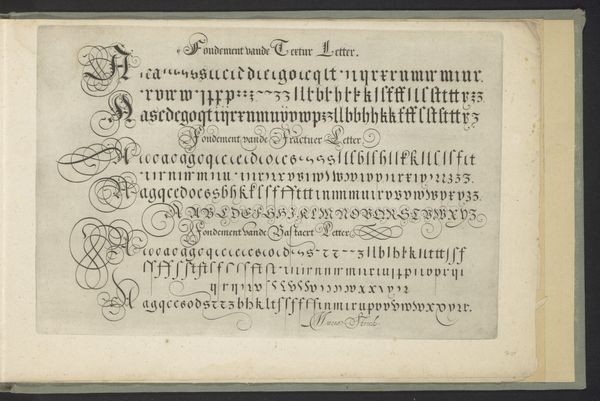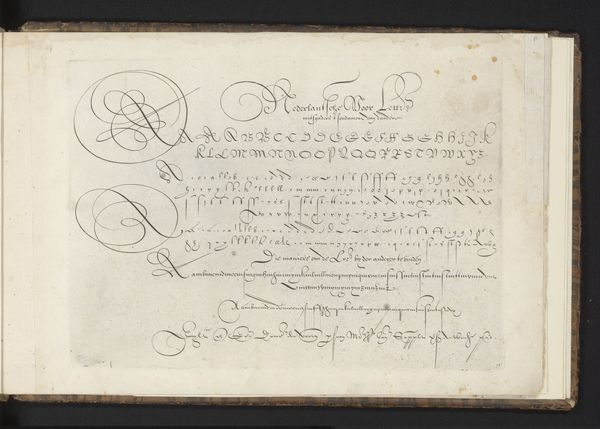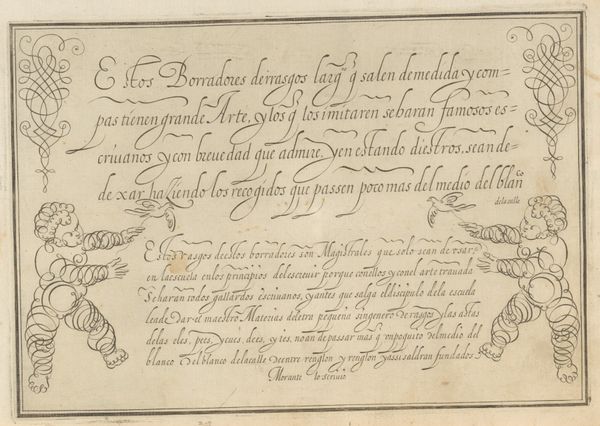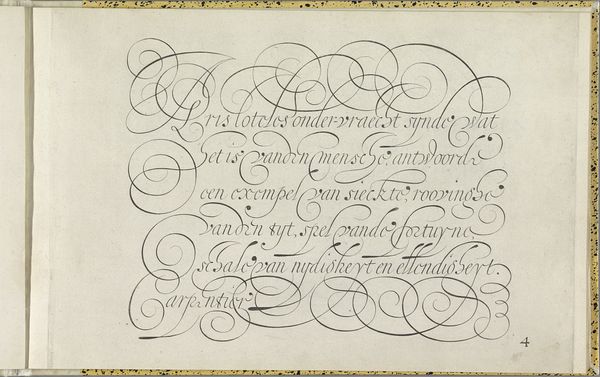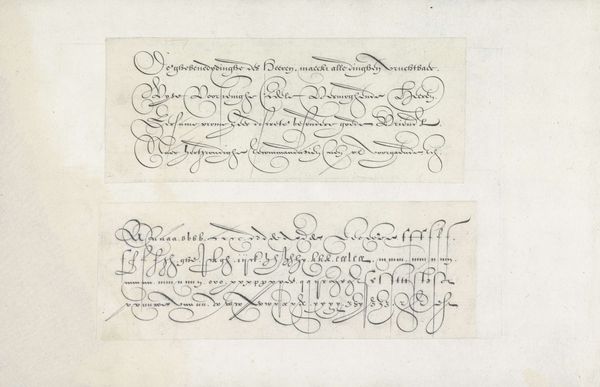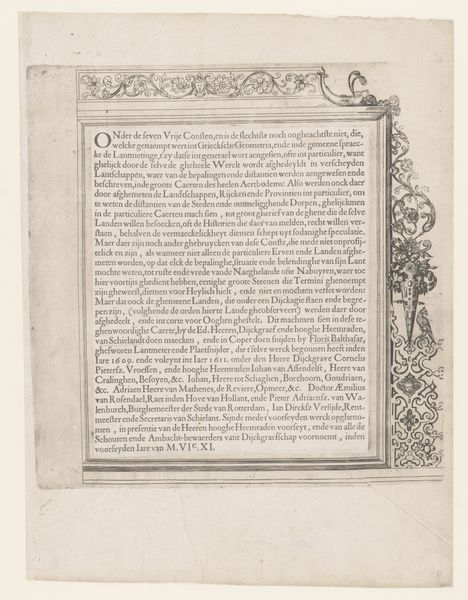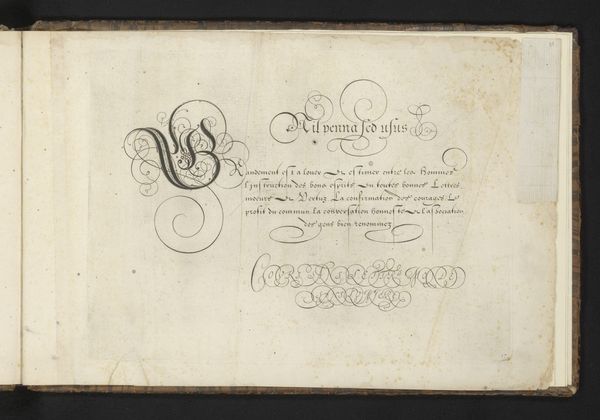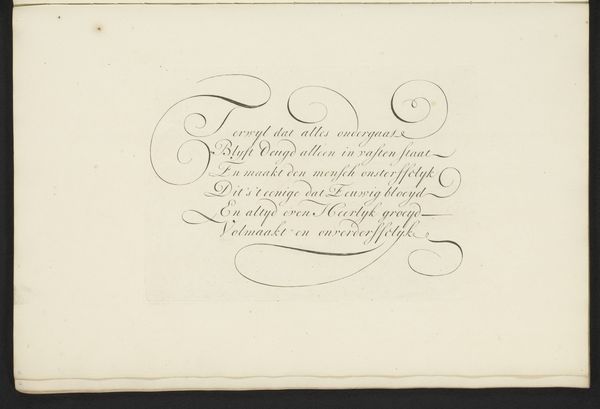
drawing, paper, ink
#
drawing
#
aged paper
#
script typography
#
hand-lettering
#
hand drawn type
#
hand lettering
#
paper
#
ink
#
hand-drawn typeface
#
geometric
#
stylized text
#
thick font
#
genre-painting
#
handwritten font
#
academic-art
#
calligraphy
#
small lettering
Dimensions: height 218 mm, width 166 mm
Copyright: Rijks Museum: Open Domain
Curator: This artwork is a drawing entitled "Schrijfvoorbeeld met enkele keren het alfabet," or "Writing Sample with Several Alphabets," created in 1649 by Jean de la Chambre, rendered in ink on paper. Editor: It has an austere and meticulous feeling. Seeing all of these letterforms arrayed methodically across the page feels… almost devotional, or like an incantation. Curator: I think it’s interesting how a seemingly straightforward writing sample can invite readings that intersect gender and class. Calligraphy was an expected skill for elites, especially women. It was both an accomplishment, but also a subtle form of social control. Editor: It’s more than just a sample of handwriting, isn't it? These letters, with their swirls and precise lines, represent codified social rituals. Look at the flourishes on each line, almost like musical notation; the way that memory, identity, and selfhood are interwoven and visually displayed for posterity. Curator: Indeed. Each repetition of the alphabet can be seen as the construction and reinforcement of social boundaries. Whose voice is considered 'legible,' whose script 'valid,' who has access to writing at all – these all factor in when approaching the work. It also is worth remembering the immense degree of gendered labor involved in literacy during this period. Editor: It becomes a palimpsest of cultural values. You see, I am fascinated by how symbols communicate more than their surface meanings, and calligraphy especially carries echoes of power, knowledge, and legacy. Each curve and stroke encodes a connection to tradition. Curator: So, reading these looping characters through a feminist lens allows us to confront inequities inscribed within its form. To question the aestheticized representation of constraint is, to me, invaluable. Editor: Yes, perhaps. But the power of symbolic forms such as these cannot be divorced from something more primal - the individual effort that went into drawing these letterforms to mimic language and share meaning. A trace of humanity rendered permanent, despite everything.
Comments
No comments
Be the first to comment and join the conversation on the ultimate creative platform.
